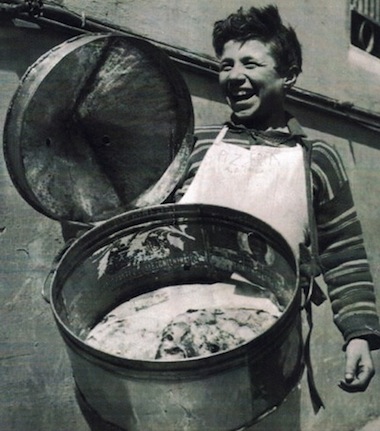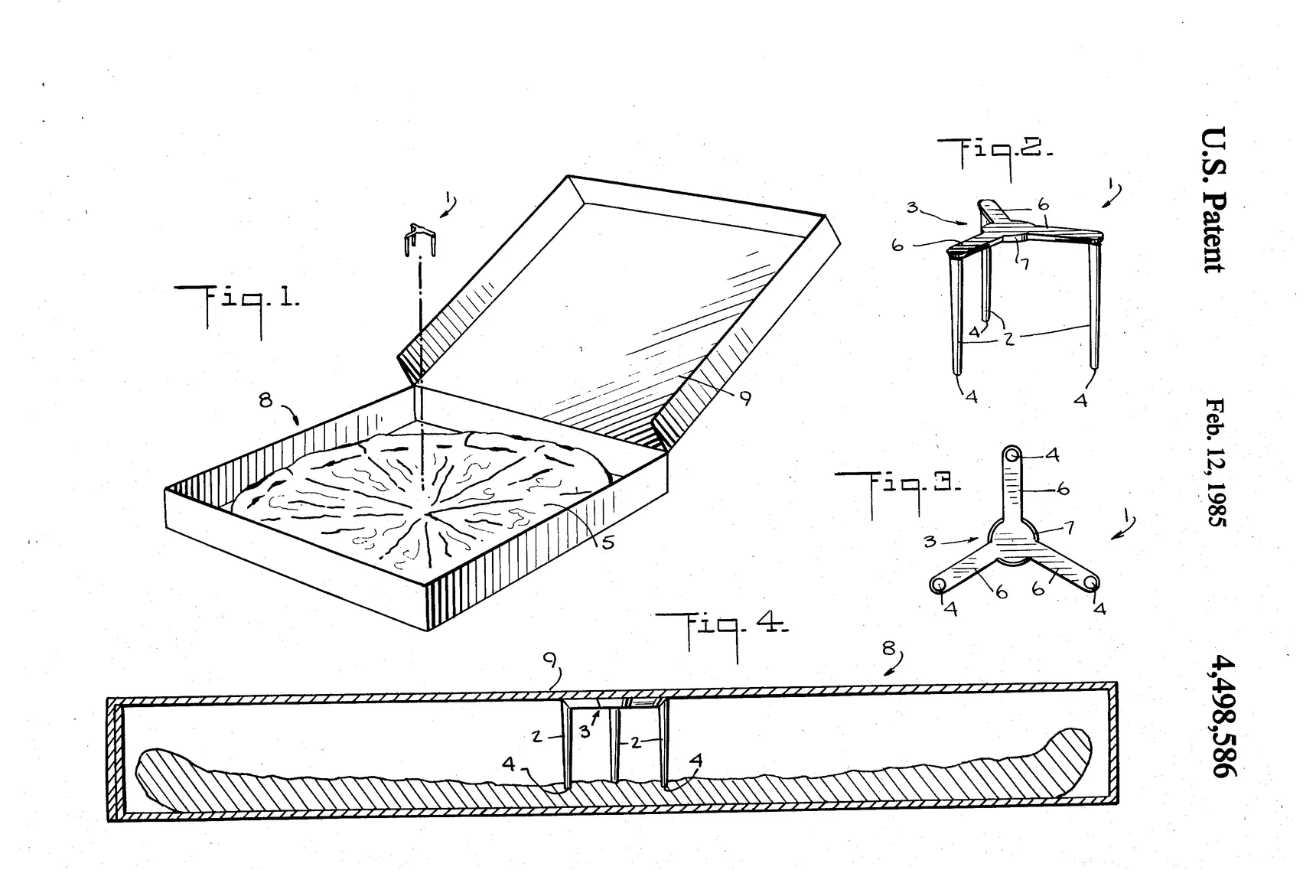History of Takeout: Ticking all the Right [Pizza] Boxes
Written by Signe Langford
Seriously, the humble pizza box has a fascinating history – and it all started when a Queen got a craving for ‘za.
Legend has it the first pizza delivery was made in Naples, Italy – naturally! – by royal request from Chef Raffaele Espostio to a peckish Queen Margherita in 1889. Pizza – flat bread with toppings – has been around since, well, since bread. But the notion of putting it into a container and taking it to someone is relatively new. We imagine Chef Esposito delivered the royal pie on silver, but what did early modern pizza boxes look like, how has technology improved them, and what might the future hold for pizza delivery?
North Americans can thank 20th Century Italian Immigration and World War Two soldiers returning from Europe in the l940s for pizza’s rise to ubiquity in Canada and the US. Now, it’s hard to imagine a time without pizza on every corner and delivery at the click of a mouse, but it’s taken innovation, vision, and hard work to get us to here from there – there being 1948 when the first Canadian pizzeria fired up its ovens in Montreal.
In 19th century Italy, pizza was a street food. The pizzas were baked in kitchens, then placed into vented metal – tin or copper – containers to be delivered to the street hawker; these were the first pizza boxes. Restaurant-to-home pizza eating didn’t start with delivery; it started with pick-up – often in containers that needed to be returned – because the pizza box had yet to be developed.
The pizza delivery revolution really took off in the 1960s, with the invention of a sturdy, practical, and affordable pizza box. Before corrugated cardboard, when pizza makers in North America looked for a solution to impractical, heavy, and expensive metal delivery packaging, they turned to bakeries, and the classic thin cardboard cake or pie box, for the answer. Disposable and cheap, yes. Able to stand up to the heat, oil, and steam of a freshly baked pizza? No.
The prototype of all modern pizza boxes was invented in 1963, and its features haven’t really changed all that much since: it was solid and stackable; vented and breathable; moisture- and oil-resistant, and made of strong corrugated cardboard that could be stored flat and folded into a box as needed. Food historians assume that it was Domino’s Pizza in the US that created the first modern pizza box, but there is no patent information pre-dating Domino’s unique box design – known as the “Chicago fold” – which was patented in 1988.
Pizza delivery in Canada went mainstream in 1967 with Canadian company, Pizza Pizza, while Pizza Hut, wouldn’t start delivery in Canada until 1988. We asked Daniel Fingerote, Marketing Manager of Pizza Hut Canada, to tell us what they look for in a pizza box. “A great pizza box always needs to start with the guest,” says Fignerote. “Our pizza should taste just as good coming out of a pizza box as it does coming out of the oven – still hot and crispy and not soggy. Having a pizza box that is the correct height and properly ventilated is super important for this; too much room and you end up with a cold pizza. Too little room and you risk squishing the pizza when they’re stacked.”
“The pizza box needs to be the correct dimensions to ensure that the pizza doesn’t move around or get flipped over,” says Fingerote. “But can still fit into a delivery bag and can stack properly. If the box design is off, it can make opening and closing the box difficult and frustrating for both the customer and the store team members preparing the order. The box should be made of the correct material to retain heat and be durable for delivery, while also being ‘grease proof’ to keep all the food inside of the box and not leaking onto tables.”
Clearly, a lot of thought and creativity goes into each and every box, but there are still problems to be solved. According to Fingerote, “Many boxes on the market have poor ventilation leading to a soggy crust, or don’t keep the pizza hot enough leading to a poor guest experience. Some boxes are too big or have unique dimensions making them difficult to stack or to fit into delivery bags, this ultimately ends with a poorer guest experience. Lastly, many pizza boxes aren’t recyclable leading to more wastage.”
Which brings us to those tiny plastic tripods – Pizza Savers – pressed into the middle of a pizza. They were designed in the mid-1980s to keep the tops of flimsy pizza boxes from collapsing down onto the melted cheese. They did the job, but left us with one more piece of plastic waste to deal with. If Fingerote had a magic wand and could conjure up the perfect pizza box, it would “…keep pizza as hot and crispy upon delivery as it was when it exited the oven; and the box be easily recyclable in all regions after any type of use, even if dirty. The box would be super light and easy to fold; in a perfect world, empty boxes would nest to save space in restaurants. Lastly, for consumer peace of mind it would have a ‘safety seal’ showing that the pizza has not been opened since it was packaged. This would be secure yet easy for customers to open quickly.”
Fast forward to 2019 for the next big thing in pizza boxes, when Pizza Hut introduced its revolutionary round design to the US market. It was round so it used less paper to make; was made of a more sustainable, compostable, and breathable material, featuring raised bumps allowing air to circulate between the crust and the box. Alas, it hasn’t made it to the Canadian Pizza Huts yet.
In the US, World Centric’s PizzaRound™ is a one hundred per cent tree-free, plant-based, compostable pizza container, featuring a circular design which reduces waste. Made from bamboo and sugarcane – two compostable and renewable resources – they say the container does a better job than cardboard dealing with moisture and grease. It’s also freezer-safe and isn’t coated with plastics or waxes. It’s only a matter of time before we see innovations such as this available to the Canadian market.
Hungry for more?
The Pizza Box Chest of Drawers – For orders of multiple pies, some pizza delivery brands stacked their boxes then wrapped that in a cardboard sleeve, keeping them all together, making delivery easier, and helping to keep the pies warmer.
Compartmentalized Thinking – As pizzerias diversify their menus to satisfy more dining desires, pizza boxes have become larger and compartmentalized to accommodate different foods, from salads to pastas alongside the main attraction.
Safety First – The pandemic pushed all sorts of innovation; Pizza Pizza introduced “locking tamper-proof and safety sealed boxes. According to their website; “After the box is closed and locked, your box cannot be opened until you break the seal and pull down the tab…boxes are sealed with a label in the restaurant that only you can break.”
An Extra Layer of Protection – The Corrugated Pizza Pad was added to boxes, giving the pie a ridged surface to sit on which offered better air circulation, as well as moisture- and grease-absorption.
Pizza and a Movie – In Hong Kong, Pizza Hut ran a promotion – the Blockbuster Box – where, by adding your Smartphone and the included lens, the box converted into a projector.
Ad Revenue – Some pizza companies now offer ad space on their boxes to other brands.




